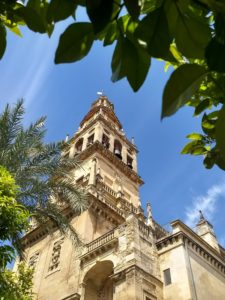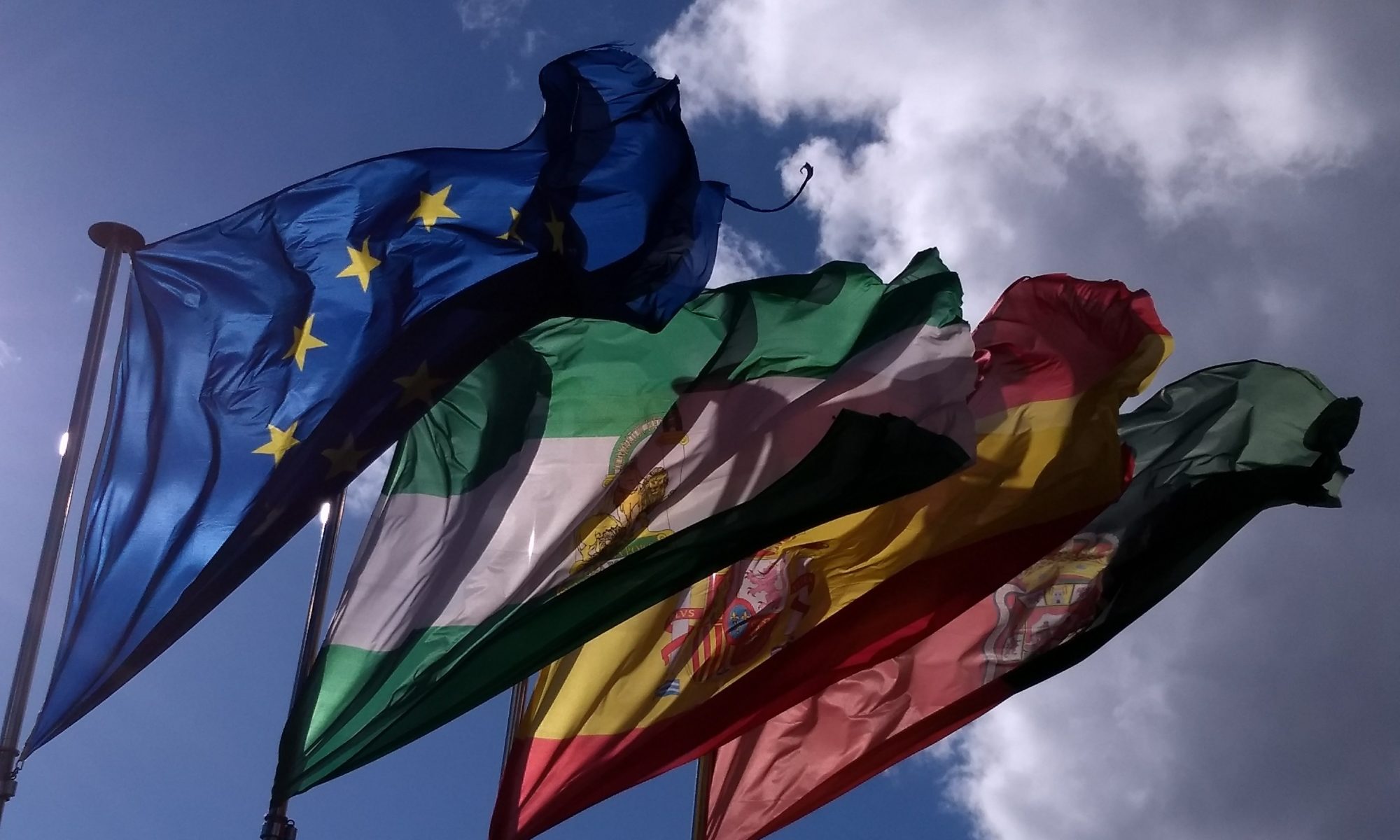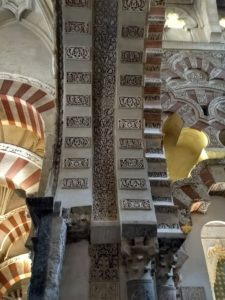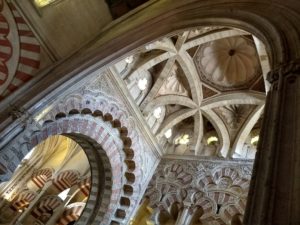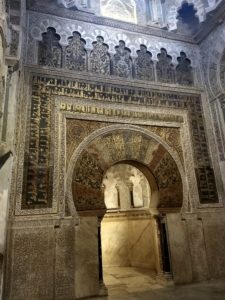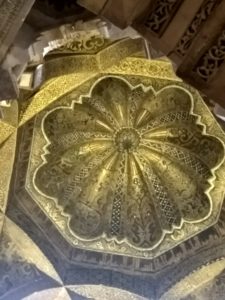
23’000 m² ist sie gross, die Mezquita, und damit weltweit einer der grössten Sakralbauten. Wer sie vom Glockenturm her kommend durch den Orangenhof betritt, entrückt in eine endlos scheinende, rhythmische Welt inmitten von 856 Säulen aus Marmor, Granit und Onyx und aus doppelten Hufeisenbögen von rotem Backstein und weissem Stein. Die 19 Schiffe der Gebetshalle werden in weiches Tageslicht getaucht und laden zum ruhigen Gang durch dieses Meisterwerk ein, dessen Betsaal über 60% des ganzen Gebäudes einnimmt.
With 23.000 m² , the Mezquita (Mosque) in Córdoba is one of the worlds largest religious buildings. Accesing it from the belltower through the Orange courtyard lets you enter a seemingly endless rythmical world consisting of 856 marble, granite and onyx columns crowned by double arches made of red bricks and white stones. The 19 naves of the prayer room let soft daylight enter and encourages a slow and tranquil walk through this masterpiece that takes up almost two thirds of the total area.
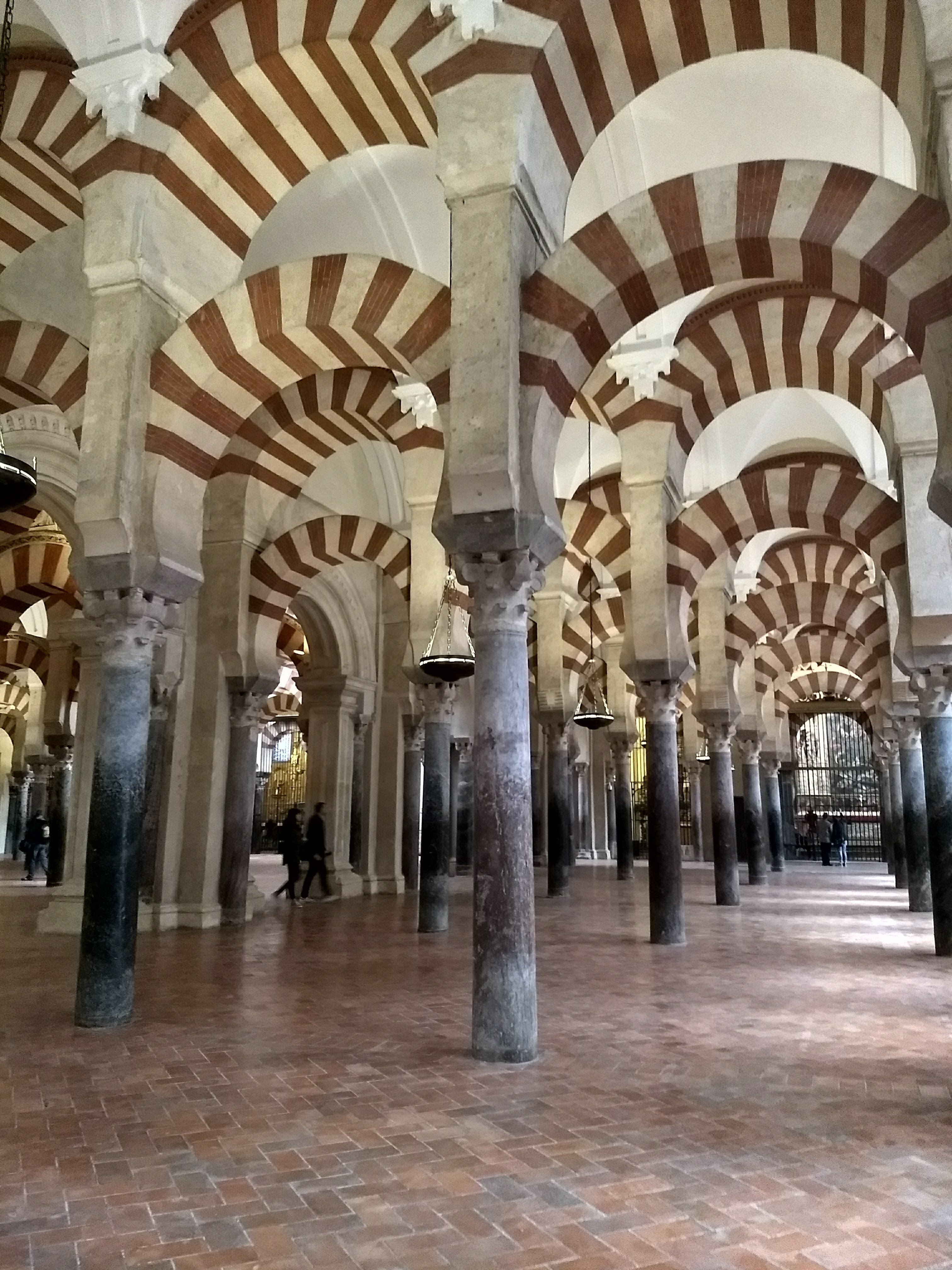 Im 12. Jht. wurde die Moschee fertig gestellt und erstaunlicherweise nach Süden, nicht nach Mekka, ausgerichtet. Der Grund dafür bleibt unklar, möglicherweise wollte sich der Kalif von Córdoba von den Herrschern aus Damaskus distanzieren. Der Ursprungsbau von 785 enthielt 11 Schiffe, welche vom Minarett, dem heutigen Glockenturm, her verlaufen. Die nächsten beiden Erweiterungen (821/929) haben die Schiffe verlängert, während mit der dritten Erweiterung (987) acht zusätzliche Schiffe seitlich hinzugefügt wurden. Bemerkenswert scheint insbesondere, dass durch mehrere Jahrhunderte hindurch stilistisch keine Änderungen an der Moschee vorgenommen, sondern diese lediglich vergrössert wurde. Anfänglich bot die 7’000 Gläubigen Platz, zuletzt 30’000.
Im 12. Jht. wurde die Moschee fertig gestellt und erstaunlicherweise nach Süden, nicht nach Mekka, ausgerichtet. Der Grund dafür bleibt unklar, möglicherweise wollte sich der Kalif von Córdoba von den Herrschern aus Damaskus distanzieren. Der Ursprungsbau von 785 enthielt 11 Schiffe, welche vom Minarett, dem heutigen Glockenturm, her verlaufen. Die nächsten beiden Erweiterungen (821/929) haben die Schiffe verlängert, während mit der dritten Erweiterung (987) acht zusätzliche Schiffe seitlich hinzugefügt wurden. Bemerkenswert scheint insbesondere, dass durch mehrere Jahrhunderte hindurch stilistisch keine Änderungen an der Moschee vorgenommen, sondern diese lediglich vergrössert wurde. Anfänglich bot die 7’000 Gläubigen Platz, zuletzt 30’000.
The Mosque was completed in the 12th century and it is oriented to the South and not towards Mecca. The reasons for this surprising feature are unclear, it is possible that the Caliph of Córdoba used it to show his independence from the rulers in Damascus. The original building from 785 had 11 naves extending South from the Minaret, today the belltower. The following two extensions (821 and 929) prolonged the naves, while the third in 987 added 8 new naves to the east. It is specially remarkable that over the centuries the style was kept and the enlargments are not immediately recognisable as such until you take a closer look. The inital construction could shelter 7.000 faithfull, after the last addition 30.000 found place in it.
Der Mihrab, während der zweiten Erweiterung entstanden, ist eines der Prunkstücke des gesamten Baus. Bestehend aus Marmor, Edelseinen und Blattgold, ist die Gebetsnische eine höchst kunstvolle, atemberaubende Steinmetzarbeit, über der eine goldene Kuppel hängt.
The Mihrab, added during the second enlargement, is one of the jewels of the building. Made of marble, jewels and goldplate, the praying niche is a very intricate, artistic and decorated masonry work crowned by a golden dome.
Die erste christliche Kapelle wurde Ende des 14. Jhts. in die Moschee eingebaut. 1523 erlaubte König Karl I von Spanien (gleichzeitig Kaiser Karl V vom Heiligen Römischen Reich) den Kirchenvätern den Bau einer Kathedrale innerhalb der Mauern der Moschee. In klassischer Kreuzform fügt sich das christliche Bauwerk in den Säulenwald der Moschee ein. Symbiose oder Fremdkörper? Das bleibt dem Auge, dem Verstand und dem Herzen der Betrachter*innen überlassen…
The first christian chapel was built into the mosque at the end of the 14th century. In 1523 King Charles I of Spain (who was also Emperor Charles V of the Holy Roman Empire) allowed the church rulers to build a Cathedral inside the Mosque. In a classical latin cross layout it blends into the Mosque’s forest of collumns. Addition or Abberation? That’s up to the eye, mind and heart of the beholder.
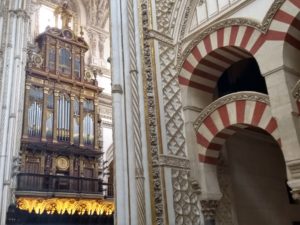
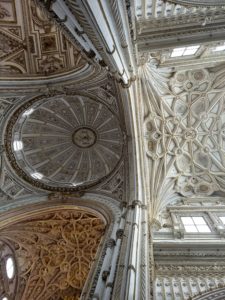
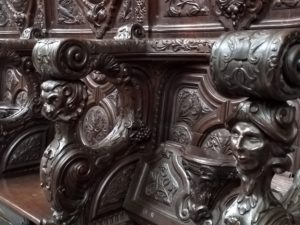
Nach der Fertigstellung 1526 soll der Überlieferung nach Karl I zu den Verantwortlichen gesagt haben: „Ich wusste nicht, um was es sich hier hantelte. Denn wenn ich es gewusst hätte, hätte ich nicht erlaubt, dass man Hand an das alte Gebäude legt. Ihr habt getan, was möglich war, etwas erbaut, was es andernorts schon gibt, und dafür habt ihr etwas zerstört, was einmalig in der Welt war.“
When the cathedral was finished in 1526, Charles I it and is supposed to have exclaimed; „I didn’t realise what you were doing here. Had I known, I would have prevented that you changed the old building. You have made what you could, you have built something that is similar to what we have other places and in doing it, destroyed something that was unique in this world.*
Wir besuchen die Mezquita am gleichen Tag zweimal – bei Tageslicht und nachts. In einer „kleinen“ Besuchergruppe (ca. 80) werden wir durch den dunklen Raum geführt. Während das Publikum der Führung folgt, werden einzelne Stationen beleuchtet und separat kommentiert und mit Musik unterlegt – angefangen im Orangenhof unter dem Glockenturm.
Ob uns die Tages- oder die Abendführung besser gefallen hat, ist kaum zu sagen. Berührt, erstaunt und ergriffen waren wir beide Male und werden dies auch beim nächsten Besuch sein…
We visit the Mezquita twice on a single day, during the day and at night. In a „small“ group (of about 80 persons) we are guided through the darkened halls. While we follow the guides, the different parts are illuminated and described one after the other while music follows us around, beginning in the Orange courtyard and the Belltower. We can’t say which visit we liked more. We were moved, surprised and gripped by both and we will be again the next time we come…
